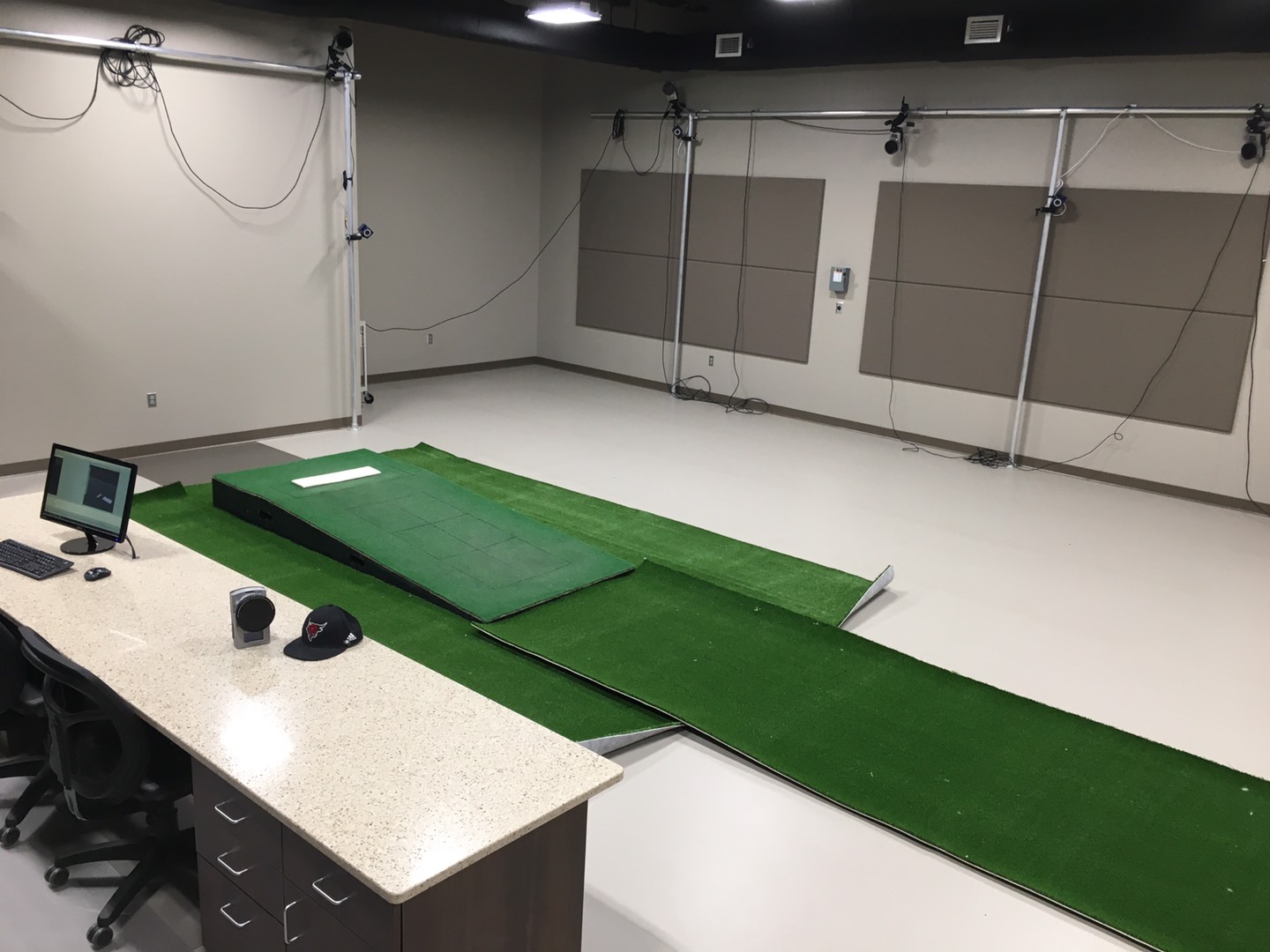UNO Pitching Lab

Collaborators: Dr. Adam Rosen, Dr. Sam Wilkins, Dr. Kristen Nicholson
Graduate Assistants: Tyler Hamer, Garrett Eggleston, Mike Servais
Project Description: Using the leading technology in the field, this multi-step assessment helps athletes further understand their pitching motion. Each pitcher is recorded during a bullpen session using state-of-the-art motion capture cameras surrounding our custom force-plate instrumented pitching mound. After evaluation, our team of movement experts provides each athlete with a detailed clinical and biomechanical analysis that can be used to develop a customized training program targeted at addressing the specific needs of the athlete. This program will be taken by the athlete and given to their coaching staff to help put their program into motion. Our goal is to help every player move as efficiently as possible, keeping them healthy and performing at their best.
Force Control Variability during Leg Press After ACL Reconstruction

Collaborators: Dr. Amelia Lanier, Dr. Adam Rosen
Research Coordinator: Lindsey Remski
Project Description: We have developed a novel method for assessing neuromuscular control of the quadriceps in individuals with ACL reconstruction. Using force plates that can be attached to a leg press, we record forces during the leg press exercise and measure the force control of each leg using nonlinear analysis. Using this information in conjunction with standard return-to-sport assessments, we can identify individuals who may be at increased risk of subsequent injury.
Gait mechanics of children with Cerebral Palsy
Biomechanics Faculty: Dr. David Kingston
Collaborators: Drs. Nickolas Nahm and Matthew Halanski
Graduate Assistants: Joseph Harrington, Jutharat Poomulna
Project Description: We are investigating pre- and post-operative changes to walking mechanics following fixed knee flexion deformity surgery in children with Cerebral Palsy (CP). The prevalence of CP is approximately 3.3/1000 live births in the US and is the most common cause of motor disability in childhood. Using a minimally invasive surgical technique, our clinical collaborators at Children’s Hospital & Medical Center work with younger patients, that have open growth-plates, to quickly return them to weight bearing activity. We are combining overground and treadmill training to establish appropriate doses of walking speed, direction, and environment to understand rehabilitative changes to segmental coordination, motor control, and endurance of the lower limb.
Plantar unloading from walking aid use in persons with diabetes mellitus
Biomechanics Faculty: Dr. David KingstonCollaborators: Dr. Vijay Shivaswamy
Graduate Assistants: Jose Anguiano-Hernandez
Project Description: This project will determine how the use of three commonly prescribed walking aids may decrease diabetic foot ulcer (DFU) risk in adults with Type II diabetes mellitus. Close to 50% of adults with diabetes mellitus lose plantar sensation in their feet and complications related to DFUs account for over a third of all amputations in the US. 3D motion capture and wireless in-shoe pressure sensors will be used to obtain plantar pressure distribution and walking mechanics data as participants unload a single limb and support themselves with instrumented walking aids. Computational modeling techniques will explore tissue and joint loading from using walking aids to guide future clinical prescription and improve DFU healing interventions.